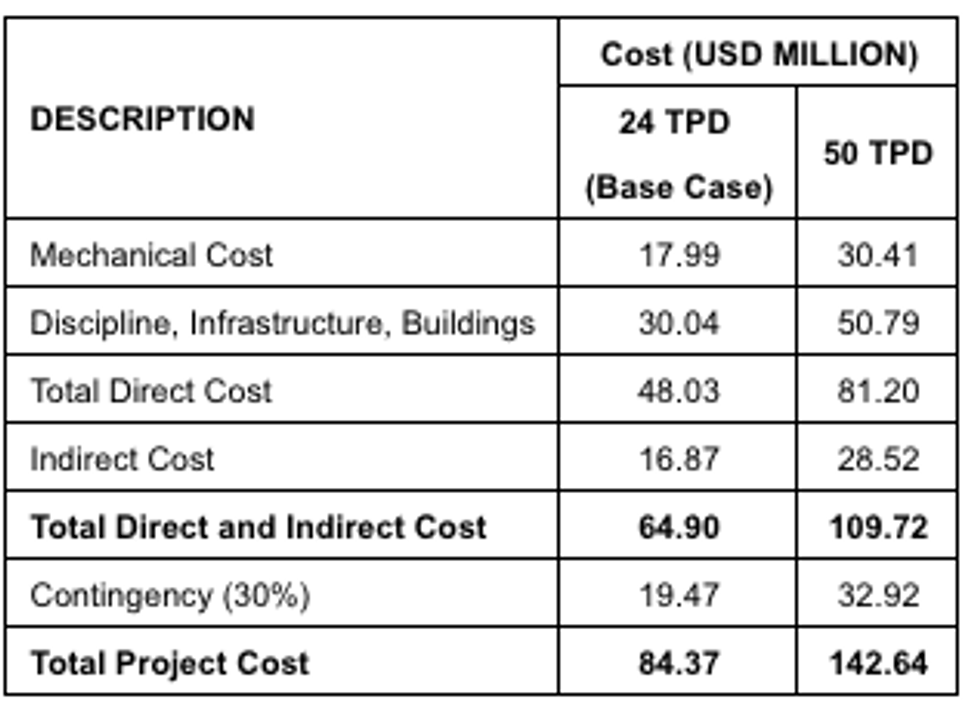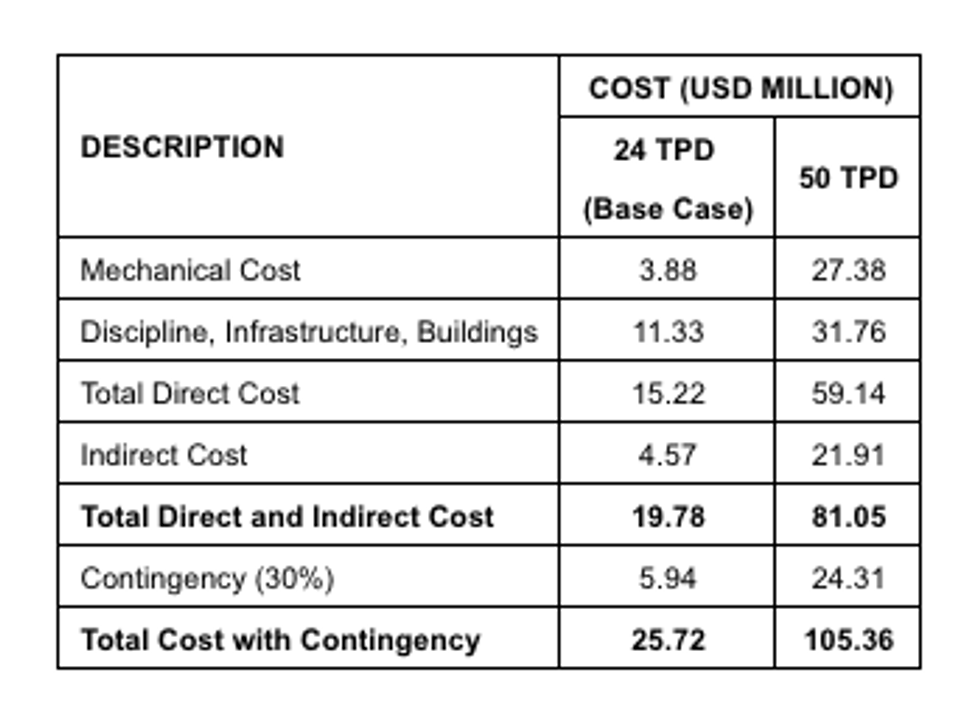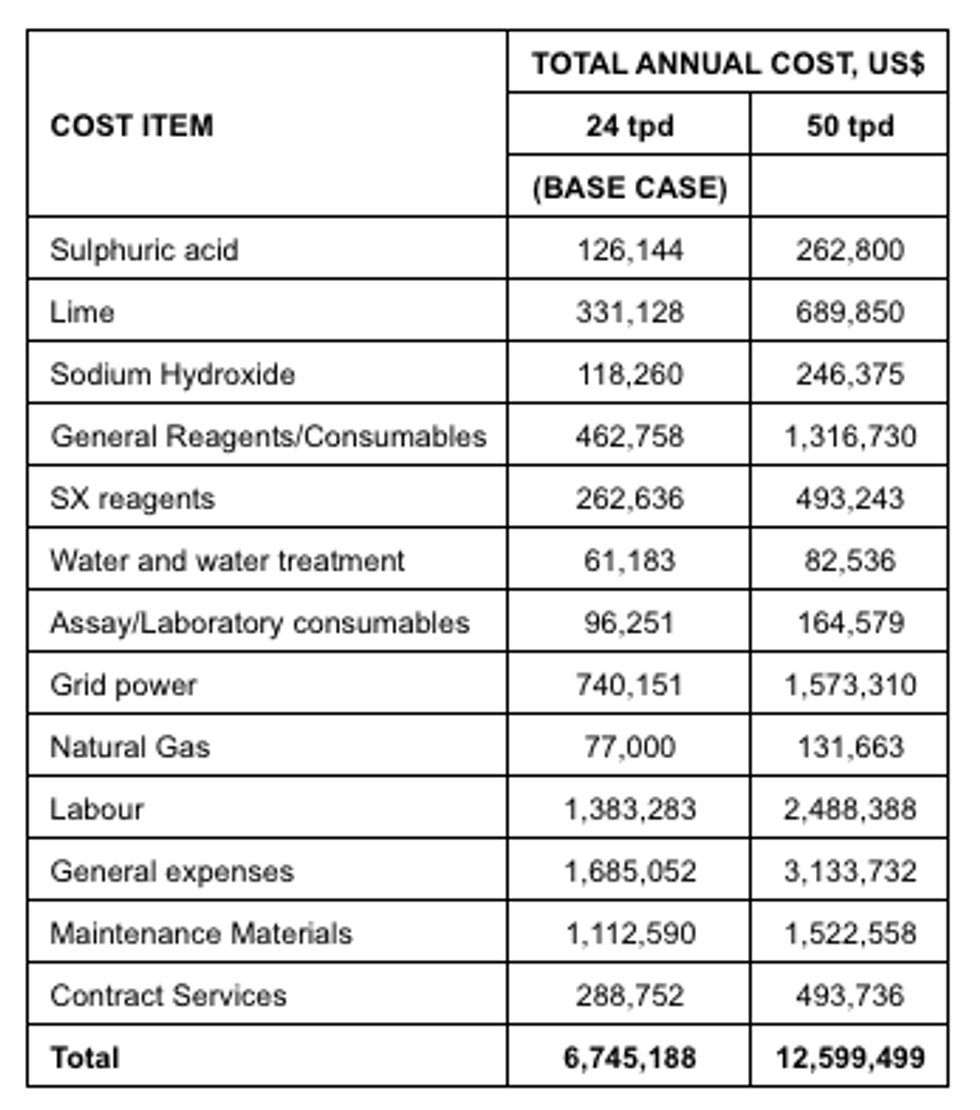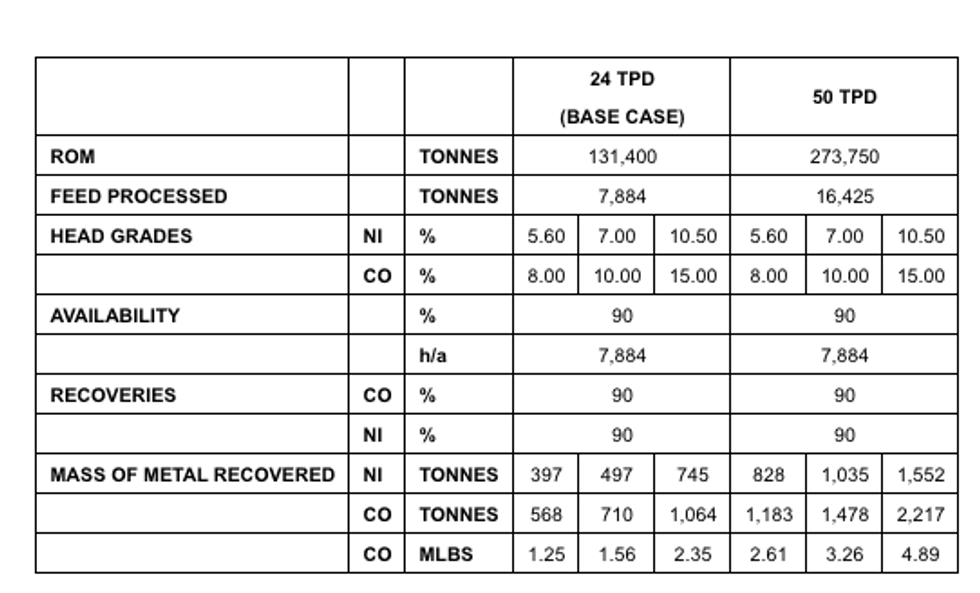First Cobalt Assessing Restart of Canadian Refinery
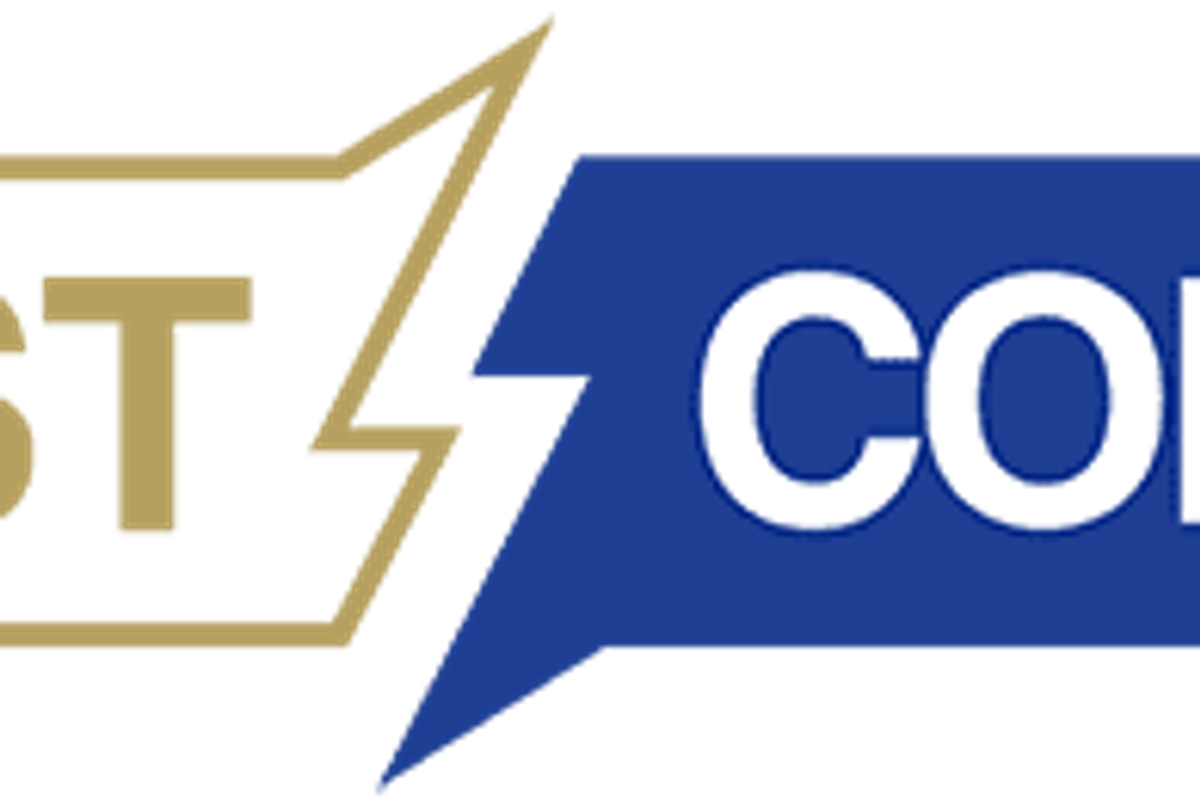
First Cobalt Corp. (TSXV:FCC, OTCQX:FTSSF, ASX:FCC) (the “Company”) is pleased to announce the results of three studies supporting a restart of the First Cobalt Refinery in Ontario, Canada. All amounts are in US dollars unless otherwise stated.
First Cobalt Corp. (TSXV:FCC, OTCQX:FTSSF, ASX:FCC) (the “Company”) is pleased to announce the results of three studies supporting a restart of the First Cobalt Refinery in Ontario, Canada. All amounts are in US dollars unless otherwise stated.
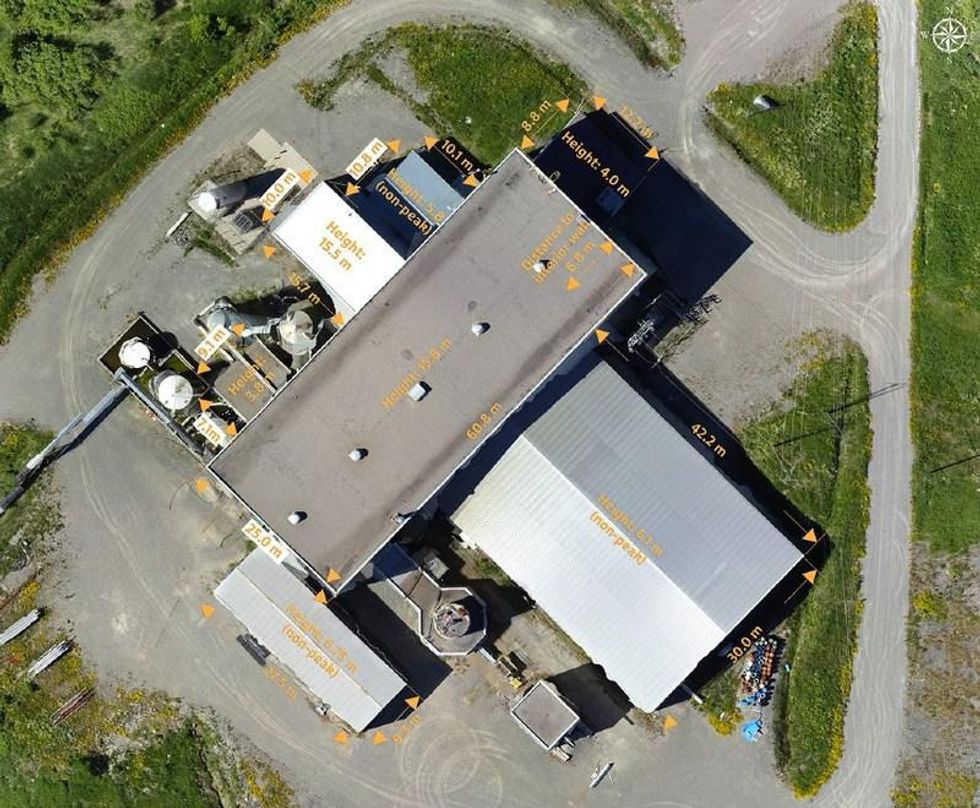

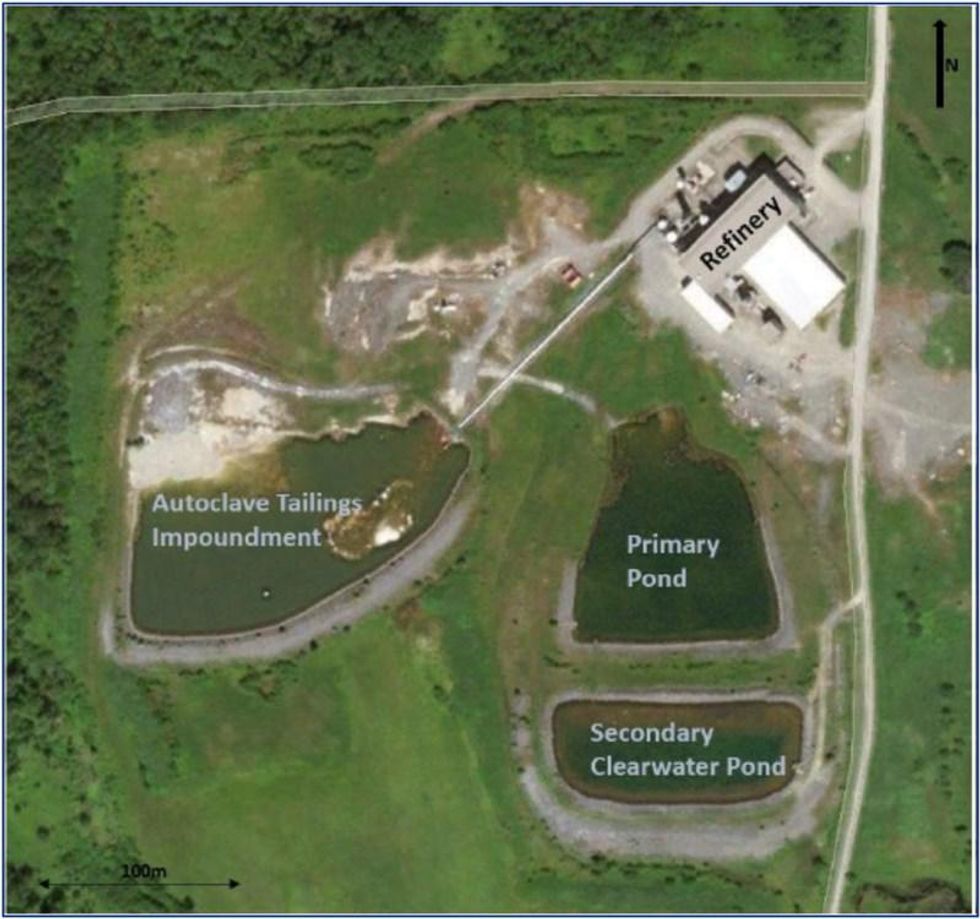
Highlights
- Three independent studies undertaken to estimate capital requirements, operating costs, permit renewal timelines, potential feedstock options and offtake opportunities
- Under a 24 tonnes per day (tpd) base case scenario, the refinery could produce 568 to 1,063 tonnes of cobalt per year; the study also considers an expansion scenario of up to 50 tpd
- At 24 tpd and using the current flowsheet, the capital cost of the restart is $25.7M (including a 30% contingency) and operating cost is estimated at $6.7M per annum
- Permitting review concludes that a restart is possible within 18 months of selecting a feedstock under the base case scenario
- Potential feed material includes cobalt concentrate from mining operations, ethically-sourced cobalt hydroxide material from the DRC and recycled battery materials from North America
- Refinery could produce a cobalt sulfate for the lithium-ion battery market or cobalt metal for the American aerospace industry
- Discussions initiated with potential offtake partners
Trent Mell, President & Chief Executive Officer, commented:
“The First Cobalt Refinery is a strategic North American asset and potentially our quickest path to cash flow by producing cobalt materials for the North American market. The facility is in excellent condition with permits in place and a short timeline to potential production, as well as optionality for both sources of material and refined product. Future offtake partners may offer flexibility with financing options to minimize dilution as we move forward.
We believe that the single best use of the refinery is to provide cobalt for the U.S. market, which does not currently produce a meaningful supply. At this time, we are working with engineering and market consultants to assess the suitability and margin opportunities of various feed sources. This process includes a review of design modifications to the existing refinery flow sheet and the resulting impact on capital and operating costs. While no decision for start-up has been made to move forward, we are reviewing funding alternatives that would minimize equity dilution for our shareholders today and in the future.”
The First Cobalt Refinery is a hydrometallurgical cobalt-silver-nickel refinery in the Canadian Cobalt Camp, approximately 500 kilometres from the US border. The facility was commissioned in 1996 and has a nominal throughput of 12 to 24 tpd. First Cobalt has completed three studies to assess options for a restart of the facility: (1) a desktop engineering review of the current flowsheet and associated capital and operating costs to resume operations at a throughput rate of 12 to 50 tpd; (2) a permit review to assess the time required to renew and amend existing operating permits; and (3) a market study to identify potential feed sources and final products and estimate gross margin opportunities.
The Company is in discussions with various feedstock suppliers and potential offtake parties who could finance an eventual restart of the cobalt refining facility. The base case scenario would see refinery resume operations at 24 tpd.
Refinery Restart Study
First Cobalt engaged Primero Group, an Australian engineering firm with an office in Montreal, Canada, to conduct a desktop study to estimate the capital and operating costs to operate the First Cobalt Refinery in its current configuration at various throughput rates. A copy of the report is available on SEDAR (www.sedar.com) and the Company’s website, www.firstcobalt.com/investors/downloads-and-filings/.
Options considered were a restart at 12 tpd using an existing single autoclave, 24 tpd utilizing a second autoclave that was previously installed but never fully commissioned, and an expansion scenario to 50 tpd, which represents a nearly-complete replacement of all process equipment within the footprint of the current building structure. For purposes of this baseline study, no process changes were investigated and all scenarios made use of the existing flowsheet.
As part of the exercise, Primero estimated the replacement (or new build) value of the refinery building at the various throughput rates. In 2012, Hatch estimated the replacement cost of the Refinery at $78M. Primero’s results from the current study range from $53M to $143M, inclusive of a 30% contingency (see Table 1). In both instances, replacement cost estimates were limited to the refinery building and did not include replacement costs of site level infrastructure, including roadways, power lines and the tailings management facility. The value of the permits was also excluded for purposes of this exercise.
Table 1. Replacement Cost of First Cobalt Refinery (excluding site infrastructure)
As illustrated in Table 2, the capital requirements for the two main scenarios including contingency amounts range from $26M to $105M.
The Company’s base case scenario would be to resume refinery operations at a rate of 24 tpd, for which Primero has estimated a capital cost of $20M plus a $6M contingency. This estimate is subject to review once the Company has selected a feedstock, which could entail changes to the flowsheet.
Table 2. Restart Capital Estimate (3Q18, -30%/+50%)
Primero estimated annual operating costs for the Refinery based on similar projects, with amendments to match the First Cobalt Refinery flowsheet. Annual operating costs under the 24 tpd base case scenario were estimated at $6.8Mper year (Table 3).
The costs presented in the report are a factored estimate, designated as an FEL 1 and AACE Class 5 (order of magnitude) estimate with an indicative accuracy range of -30%/+50%, and are based on previous historical data metrics from similar projects. Costs are typically based on first principles but as feed characteristics are undecided at this time, the operating costs provided in Table 3 are indicative only.
Table 3. Operating cost estimates (3Q18, -30%/+50%)
The Refinery historically produced a cobalt carbonate, a nickel carbonate and silver doré. The Primero study retained the original flowsheet to estimate the production potential under each scenario. The study also contemplates cobalt concentrate feed grading between 8 and 15% cobalt, resulting in 568 to 1,063 tonnes of cobalt per year under the 24 tpd base case scenario.
Table 4. Operating Scenarios1
| 1 Concentrate metal content fed into the First Cobalt Refinery will vary dependent upon feed source. A range of potential production rates for each option is provided. A mass pull to concentrate of 6% has Been assumed. |
For purposes of this baseline study, it was assumed that the refinery flowsheet would remain unchanged and that the final product would be cobalt carbonate. However, First Cobalt is considering cobalt sulfate or cobalt metal production. In order to produce a cobalt sulfate product, the flowsheet would be modified to include a cobalt crystallization circuit at a preliminary cost estimate as shown in Table 5.
Table 5. Cobalt Crystallization Circuit
Permitting Study
The Company engaged a third party permitting and environmental consultant to review requirements to allow the Refinery to increase its throughput to as much as 50 tpd. The review found that the Refinery would require a new permit to take water but that all other major permits are in place. Subject to certain modifications and amendments, it is believed that an 18 to 24-month period would be sufficient to renew and amend all necessary permits to restart the refinery. An order of magnitude cost estimate for the approval process is estimated at approximately $1M.
With respect to existing tailings capacity, it was noted that the autoclave pond has not been fully constructed and has an estimated 40,000 m3 (approximately 70,000 tonnes assuming a specific gravity of 1.74 tonnes per cubic metre) of remaining permitted capacity yet to be constructed. Operating at 24 tpd, the autoclave pond would reach capacity after eight years of operation. Thereafter, the Company could avail itself of 80 acres to the north of the Refinery to permit additional tailings storage capacity. The primary settling pond is also not yet constructed to its full capacity and it was noted that doing so would improve discharge water quality through additional retention time and increased capacity for water storage.
Market Research Report
First Cobalt also engaged a leading cobalt market research company to advise the Company on (1) indicative commercial terms for a variety of feedstock options for the Refinery, and (2) potential offtake terms for cobalt products after the refining process is completed.
The report identified three primary sources of potential feedstock: cobalt concentrate from mining operations, ethically-sourced cobalt hydroxide material from the DRC and recycled battery materials from North America. The report did not assess the feasibility of the Company’s Iron Creek Project as a source of feedstock.
The study considered offtake markets for final product. The Refinery could produce a cobalt sulfate for the battery market or it could produce cobalt metal for the aerospace and industrial sectors. Current indications are that pricing for cobalt sulfate are generally in line with cobalt metal, however the technical specifications for offtake partners are more stringent for cobalt sulfate, making cobalt metal products a viable alternative market.
Next Steps
The results of the three studies provide First Cobalt and its potential partners with a strong baseline and roadmap for further studies. The First Cobalt Refinery project team is continuing to work with engineering firms, process experts, a cobalt marketing expert and financial advisers to finalize a business plan to restart the facility.
Next steps include selecting suitable feedstock for processing and settling on whether it will produce a cobalt sulfate or cobalt metal. Thereafter, detailed engineering and permitting can commence while the Company concludes an offtake or other financing solution to finance the Refinery.
Discussions are underway with several parties regarding sources of feedstock. The Refinery can process cobalt mine concentrate from existing muckpile material found throughout the Cobalt Camp in Ontario or third-party sources of mine concentrate, as well as material from battery recycling operations or cobalt hydroxide material requiring upgrade to a finished state.
A final decision of whether to put the Refinery back into production is contingent on the outcome of the foregoing studies and discussions.
The First Cobalt Refinery
The First Cobalt Refinery is a hydrometallurgical cobalt-silver-nickel refinery located approximately five kilometres east of Cobalt, Ontario. The facility was commissioned in 1996 with a nominal throughput of twelve tonnes per day. A second autoclave was later added to the pressure oxidation circuit to double the throughput to 24 tonnes per day but the second autoclave was never fully commissioned. The current footprint includes an empty feed warehouse that once housed a mill. The facility is located on a 40-acre property that can be expanded to 120 acres with two settling ponds and an autoclave pond (Image 1).
The Refinery contains three circuits: a pressure oxidation circuit, a solvent extraction circuit and a Merrill Crowe circuit. Feed containing arsenic is first treated in the pressure oxidation circuit where arsenic is combined with iron to create a stable iron arsenate called scorodite. The Refinery permits allow scorodite to be deposited in its autoclave pond.
The facility is fully permitted for processing feed containing elevated concentrations of arsenic, such as those from the Cobalt Camp, the Idaho Cobalt Belt and elsewhere in North America. The Company believes that permitting a similar facility in North America today could take a significant investment of time. The ability of the Refinery to process materials containing elevated arsenic and produce cobalt battery materials has the potential to de-risk North American cobalt projects. At this time, the Company anticipates sourcing all potential feedstock from third party sources, and the decision to restart the Refinery will not be based on anticipated development of any of the Company’s current projects.
Qualified and Competent Person Statement
Peter Campbell, P.Eng., is the Qualified Person as defined by National Instrument 43-101 who has reviewed and approved the contents of this news release. Mr. Campbell is also a Competent Person (as defined in the JORC Code, 2012 edition) who is a practicing member of the Professional Engineers of Ontario (being a ‘Recognised Professional Organisation’ for the purposes of the ASX Listing Rules). Mr. Campbell is employed on a full-time basis as Vice President, Business Development for First Cobalt. He has sufficient experience that is relevant to the activity being undertaken to qualify as a Competent Person as defined in the JORC Code. The term “Competent Person” is not recognised by Canadian securities regulatory authorities, and the term is used by the Company with reference to the JORC Code, and to ensure compliance with the ASX Listing Rules and applicable reporting requirements in Australia.
About First Cobalt
First Cobalt is a North American pure-play cobalt company. First Cobalt has three significant North American assets: the Iron Creek Project in Idaho, with Inferred mineral resources of 26.9 million tonnes grading 0.11% cobalt equivalent; the Canadian Cobalt Camp exploration project and the only permitted cobalt refinery in North America capable of producing battery materials.
On behalf of First Cobalt Corp.
Trent Mell
President & Chief Executive Officer
Neither TSX Venture Exchange nor its Regulation Services Provider (as that term is defined in policies of the TSX Venture Exchange) accepts responsibility for the adequacy or accuracy of this release.
Cautionary Note Regarding Estimates of Resources
Readers are cautioned that mineral resources are not economic mineral reserves and that the economic viability of resources that are not mineral reserves has not been demonstrated. The estimate of mineral resources may be materially affected by geology, environmental, permitting, legal, title, socio-political, marketing or other relevant issues. The mineral resource estimate is classified in accordance with the Canadian Institute of Mining, Metallurgy and Petroleum’s “2014 CIM Definition Standards on Mineral Resources and Mineral Reserves” incorporated by reference into NI 43-101. Under Canadian rules, estimates of inferred mineral resources may not form the basis of feasibility or pre-feasibility studies or economic studies except for Preliminary Economic Assessment as defined under NI 43-101. Readers are cautioned not to assume that further work on the stated resources will lead to mineral reserves that can be mined economically. An Inferred Mineral Resource as defined by the CIM Standing Committee is “that part of a Mineral Resource for which quantity and grade or quality are estimated on the basis of limited geological evidence and sampling. Geological evidence is sufficient to imply but not verify geological and grade or quality continuity. An Inferred Mineral Resource has a lower level of confidence than that applying to an Indicated Mineral Resource and must not be converted to a Mineral Reserve. It is reasonably expected that the majority of Inferred Mineral Resources could be upgraded to Indicated Mineral Resources with continued exploration.”
Cautionary Note Regarding Forward-Looking Statements
This news release may contain forward-looking statements and forward-looking information (together, “forward-looking statements”) within the meaning of applicable securities laws and the United States Private Securities Litigation Reform Act of 1995. All statements, other than statements of historical facts, are forward-looking statements. Generally, forward-looking statements can be identified by the use of terminology such as “plans”, “expects’, “estimates”, “intends”, “anticipates”, “believes” or variations of such words, or statements that certain actions, events or results “may”, “could”, “would”, “might”, “occur” or “be achieved”. Forward-looking statements involve risks, uncertainties and other factors that could cause actual results, performance and opportunities to differ materially from those implied by such forward-looking statements. Factors that could cause actual results to differ materially from these forward-looking statements are set forth in the management discussion and analysis and other disclosures of risk factors for First Cobalt, filed on SEDAR at www.sedar.com. Although First Cobalt believes that the information and assumptions used in preparing the forward-looking statements are reasonable, undue reliance should not be placed on these statements, which only apply as of the date of this news release, and no assurance can be given that such events will occur in the disclosed times frames or at all. Except where required by applicable law, First Cobalt disclaims any intention or obligation to update or revise any forward-looking statement, whether as a result of new information, future events or otherwise.
Source: www.newswire.ca
